Affiliate links on Android Authority may earn us a commission. Learn more.
Roborock's Dyad Pro is a smart vac and mop without robot prices
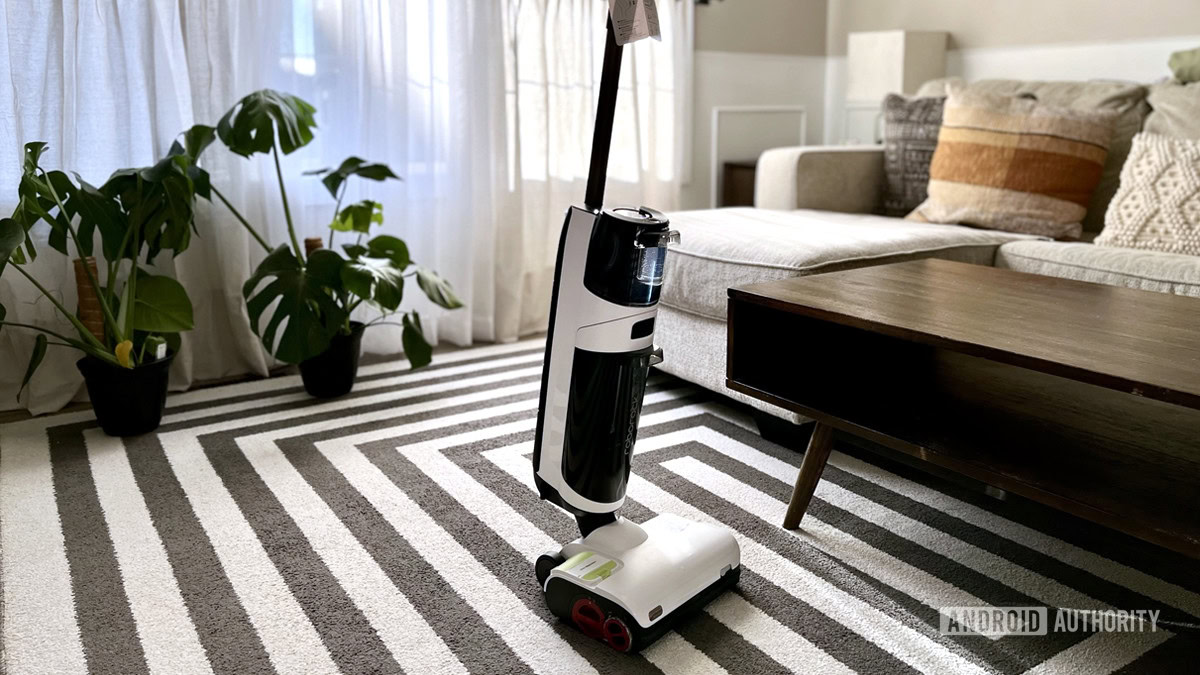
Roborock revealed a minor surprise at CES 2023 in the form of the Dyad Pro, a smart vacuum that isn’t a true robot like its S8 line. Instead of piloting itself, you control it like a conventional stand-up unit — the difference being that it can switch between suction and mopping automatically, so there’s no need for a separate mop, or even switching out attachments. I recently had the chance to test it out, and for the most part I was pretty pleased.
Update, May 2023: Recommended being diligent about emptying the dirty water tank.
Roborock Dyad Pro features and design
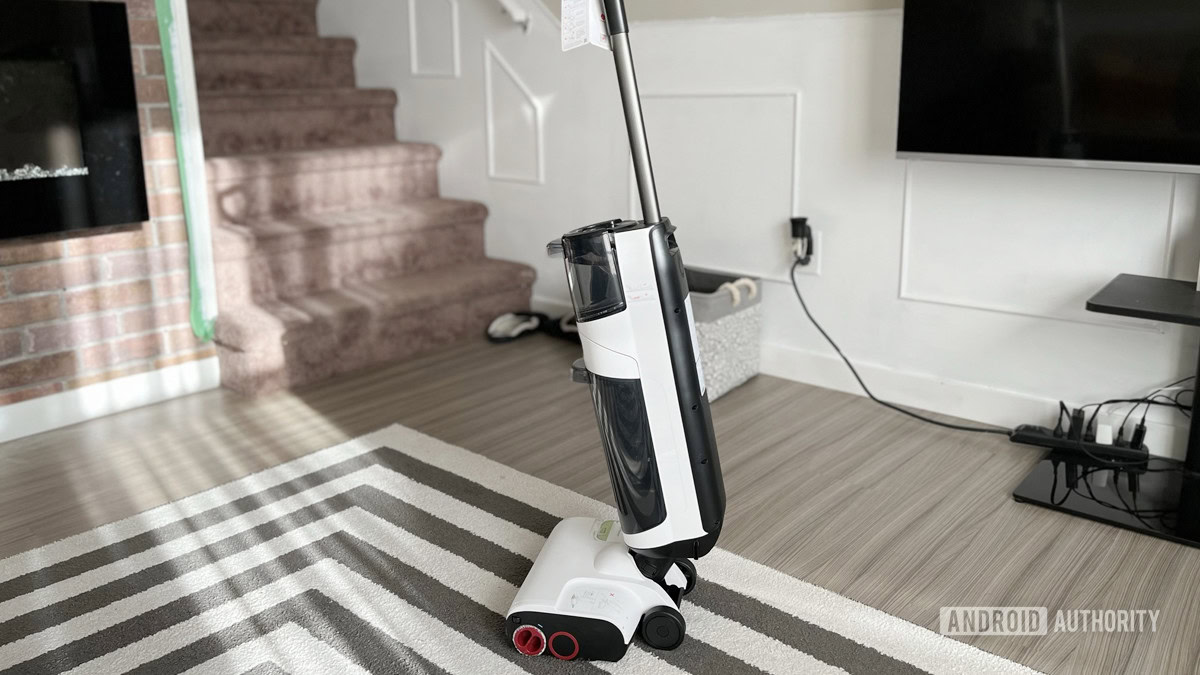
Cosmetically, the Dyad Pro is slick. It’s primarily plastic, but feels well-built and slightly futuristic — you won’t mind it sitting docked in a corner. A round LCD screen shows you battery life, Wi-Fi status, and a meter for the vacuum’s DirTect sensor, which indicates how dirty a surface is with a growing red bar. That dirt gauge is more useful for the vacuum than its users, though it might be a sign to hold still for a few seconds.
The Dyad Pro's key features are flipping between suction and mopping automatically, and a dock that enables self-cleaning and drying functions.
As its name suggests, the Pro is an upgrade from Roborock’s standard Dyad, which lacks any smart functions. The Pro also adds a cleaning solution dispenser, better edge cleaning (more on that later), and extended battery life. Roborock estimates up to 43 minutes of runtime for the Pro versus 35 for the regular Dyad.
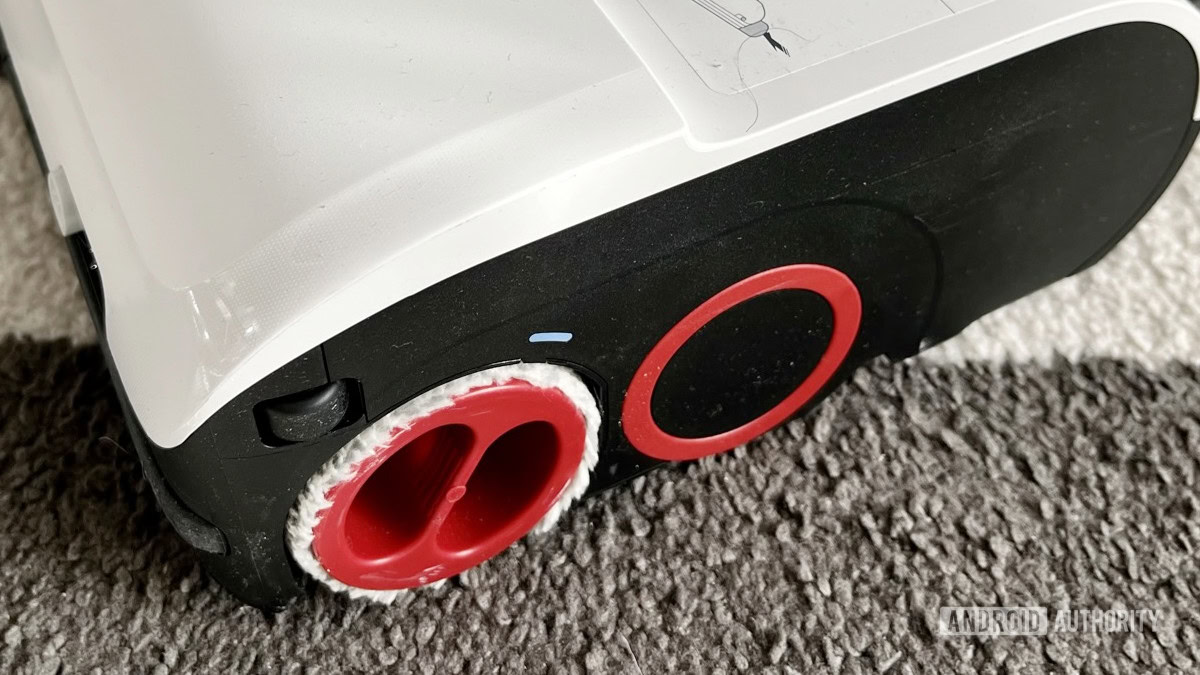
To support its mopping abilities, the Pro incorporates clean and dirty water tanks, plus a pair of custom rollers that rotate in opposite directions. It’s capable of up to 17,000Pa of suction in Turbo mode. That’s powerful, though not mind-blowing.
Included with the Pro is a dock that enables charging, self-cleaning, and drying, the last being another feature missing from the standard Dyad. The default Silent Drying mode takes three hours, but you can set that anywhere between two and six hours, or use a noisier Fast Drying option if you need to get cleaning again ASAP.
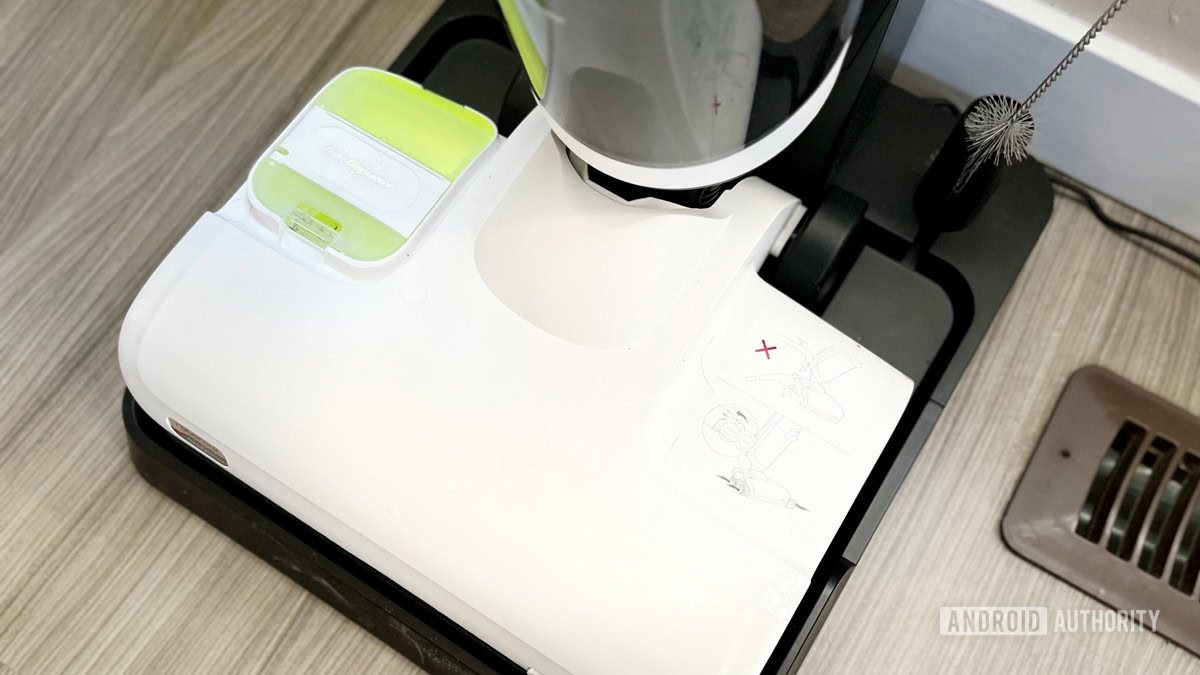
Self-cleaning can be scheduled, triggered manually via a button, or (if you change settings) automatically whenever you dock. On top of this there are Balanced/Standard and Deep self-cleaning modes, although we found the former good enough after most messes. It’s best to reserve self-cleaning for times when you don’t mind noise, since while the process lasts just a few minutes, it’s loud to the point of drowning out TV and conversation.
There are three buttons on the handle: Power, Self-Clean, and Mode. Hitting Mode cycles between Auto, Max, Floor-Drying, and Eco options. I left it on Auto most of the time, since that scales power dynamically.
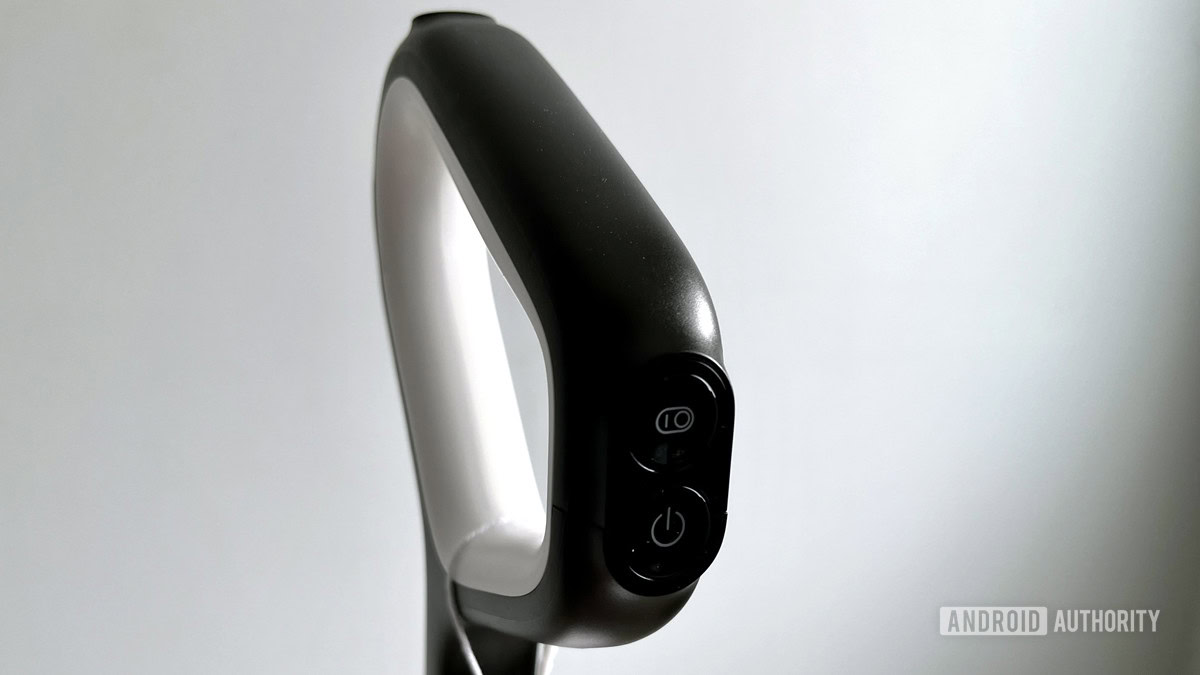
The Roborock app
Roborock’s app is available for Android and iPhone. It’s a good thing too, because when I was testing out the Dyad Pro pre-launch, I couldn’t get an iPhone to pair properly — the app would connect the vacuum to my Wi-Fi network, but then fail to connect my iPhone to the vacuum. In contrast, the process was utterly smooth on a OnePlus 9, and pairing there forced the Pro to show up in the iPhone app. Roborock was made aware of the issue, so hopefully it’s already fixed by the time you’re reading this.
When it’s up and running, Roborock’s app interface is generally intuitive. On its main dashboard you can select a self-cleaning or drying mode, then choose to start right away or schedule for later. You can’t, unfortunately, set up a regular self-cleaning timetable, but you can schedule up to 24 hours in advance.
Roborock's app interface is generally intuitive, except for a few 'hidden' settings.
If you tap a gear icon you can change suction force, water flow, and roller speed. I’d suggest leaving suction on Turbo (the maximum) and roller speed on Fast, but the water level can be set to Medium and still get results. Bump that up to High if you’re having trouble with floor stains or detergent streaks.
What’s a bit counterintuitive is that some settings can only be accessed by opening a triple-dot menu in the upper right. Those include things like firmware updates, Silent Drying duration, and the option to trigger self-cleaning the moment you dock.
If you’ve tweaked enough options and don’t care about scheduling, you can potentially use the Pro without touching the app more than once or twice. The connectivity is genuinely useful, however.
How well does the Dyad Pro actually clean?
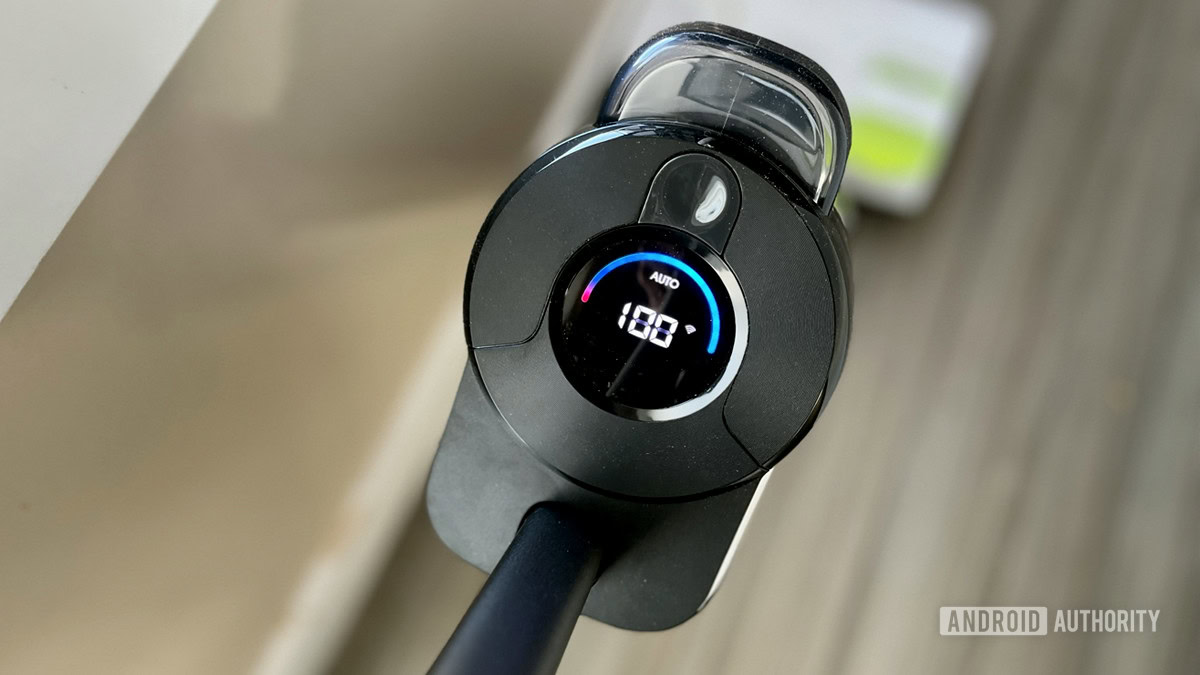
Quite well, overall. And with my house beset by DIY renovations, winter muck, and a five-year-old son, I’ve had more than a few opportunities to test it out to its fullest.
Using the vacuum is a little awkward at first. To get started you have to lift it out of the dock, unlock the stem by pressing on the base while pulling on the handle, then hold the power button for a couple of seconds. If you’re not familiar with the product, you may also have no idea what the other two buttons do based on their labeling. None of this is hard to figure out, ultimately, but it’s also non-intuitive enough that I decided to leave Roborock’s instructions attached for the convenience of my wife.
I found the Pro to be relatively light and easy to maneuver, thanks to its ergonomic handle and weight distribution. Additionally, its specialized rollers keep the size of the base to a minimum without sacrificing cleaning area, and let you get closer to the edges of walls and furniture than typical vacuums. You’ll still want a broom or a nozzle-based vacuum to pick up stubborn edge debris, but that’s par for the course.
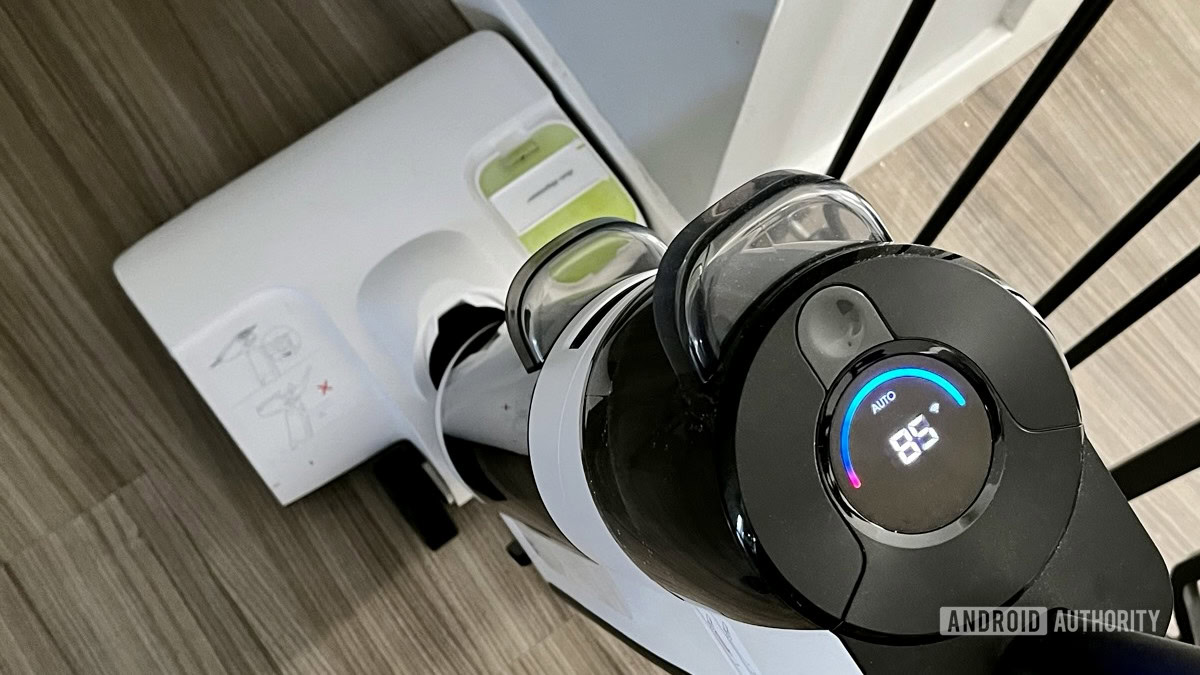
It does best with solid messes, as you’d hope given that Roborock brags about the Pro’s suction power. I had no problem scooping up crumbs, pasta, cereal, and even most pebbles dragged in from outside. In some cases it wasn’t able to dislodge pebbles from doormats, but those rocks were embedded deep enough that it was unreasonable to ask. In fact, suction is powerful enough that at one point, the Pro picked up the corner of one of those thick doormats.
Performance is just as good with liquids and mud, but slightly less impressive when mopping floor stains on laminate and tile. It can cope with many stains, especially if you use detergent and High water flow, but some more deeply embedded ones may require multiple passes if they come out at all.
The Roborock Dyad Pro transitions between vacuuming and mopping so easily it feels like witchcraft.
What’s surprising is how well the Pro transitions between vacuuming and mopping depending on the surface it’s on. There’s often a second or so of lag, but nothing major — I didn’t end up with any soaked carpets, and for the most part, it did a good job of recognizing surface types. The technology feels like witchcraft, as if it shouldn’t be able to switch so effortlessly.
A feature people may find alternately helpful and annoying is how vocal the product is. It regularly announces what it’s doing, what it needs, and any problems it’s encountering, such as something tangled in the rollers. That means there’s little confusion about maintenance, but you can’t reduce these alerts or shut them off — only change their volume or language.
Speaking of maintenance, in the testing period I had there were no problems with keeping rollers clean or having to empty the dirty water tank too often. Roborock supplies a roller brush, but unless you’re sucking up things like yarn or dog hair, don’t expect it to be needed regularly. You’ll have to replenish the clean water tank every two to four sessions, assuming you’re regularly washing floors and initiating self-cleaning when you’re done.
I would recommend being diligent about emptying the dirty water tank — if you leave it too long, it can be begin to smell.
Roborock Dyad Pro review: Should you buy it?
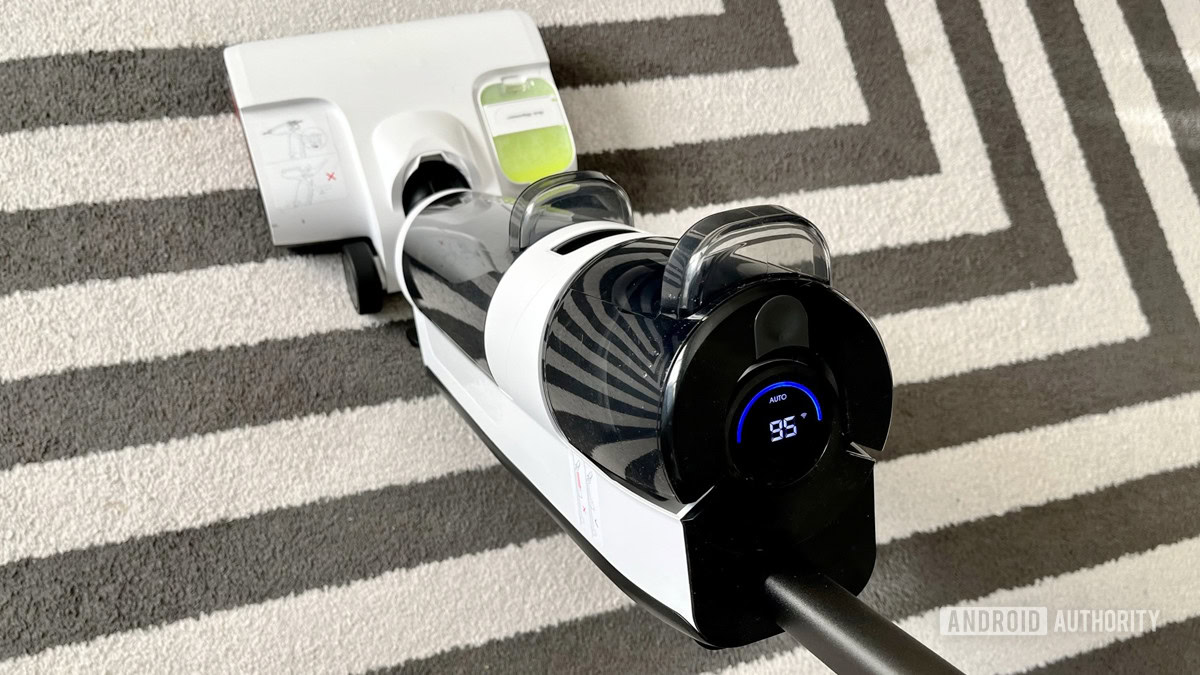
One of the appealing points of the Pro is its $450 pricetag. That’s costlier than many conventional vacuums or even a lot of lower-end robot vacuums, but most of its similarly-priced competitors can’t do any mopping, let alone switch back and forth from it on the fly. The Tineco Floor One S5 ($500) is a close parallel in features, but the Dyad Pro offers longer runtime for less cash (short of discounts).
For what you’re spending, you’re getting a solid all-in-one cleaning tool. The deciding factor may be how much mopping matters to you. If it’s something you’re doing only occasionally and in small doses, you’re probably better off combining a regular mop with a robot dry vac.
For the money, the Roborock Dyad Pro is a solid and smart all-in-one cleaning tool.
The Dyad Pro really comes into its own if cleaning your floors involves a lot of mopping, and you can’t sacrifice an entire paycheck for a robot like the Roborock S7 MaxV Ultra ($1,400). Though you’ll have to do the work yourself, you can get most of it done reasonably quickly, since there’s no changing attachments or wringing anything into a bucket. You’ll just have to finish off a few spots and edges afterward.
Incidentally, another application is a home without much maneuvering room. My latest house is more vertical than wide, and with renovation materials blocking hallways, a robot isn’t much help. The Dyad Pro allows me to enjoy at least some of the comforts of smart home cleaning tech.

